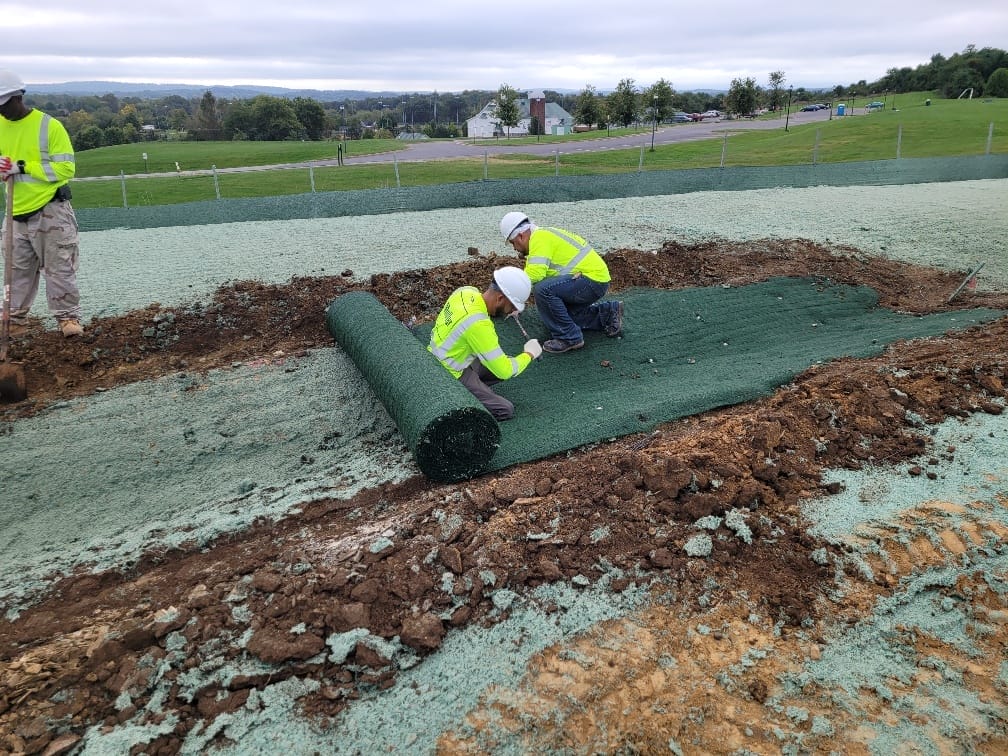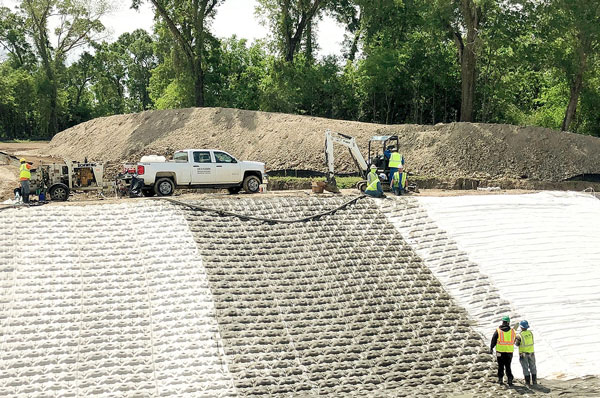Memphis Erosion Control Solutions Memphis TN: Your Local Erosion Control Professionals
Wiki Article
Finest Practices for Erosion Control in Building Projects
Are you dealing with a building task and concerned concerning disintegration control? Look no further! In this short article, we will certainly guide you via the most effective techniques for preventing erosion on your site. You'll uncover five essential methods, efficient debris and overflow administration methods, key considerations for incline stabilization, and tips for securing plant life and soil. We'll also look into the value of implementing correct drain systems. Prepare to tackle disintegration head-on and make sure the success of your building job.5 Necessary Disintegration Control Methods

To properly control erosion on your building and construction website, you'll need to carry out important strategies such as incline stabilization and debris control actions. Incline stablizing is vital in avoiding dirt erosion on high inclines. One more effective technique is the usage of disintegration control blankets or mats, which are placed on the incline and aid maintain dirt bits while allowing greenery to grow.
Efficient Debris and Runoff Monitoring

You can efficiently handle sediment and drainage in your construction project by executing correct disintegration control procedures. Sediment and overflow management is crucial to stop erosion and safeguard the surrounding atmosphere. One reliable action is the installation of silt fencings along the boundary of the building website. These fencings aid to contain sediment and prevent it from entering nearby water bodies. One more important technique is the execution of disintegration control coverings or floor coverings. These blankets supply a protective layer on bare dirt, lowering the effect of rainfall and preventing erosion. Furthermore, using sediment basins or debris catches can help to capture debris and avoid it from entering stormwater systems. Routine maintenance of these steps is essential to ensure their efficiency throughout the building and construction task. This includes cleansing and evaluating debris basins and routinely replacing silt fencings and disintegration control blankets as needed. By implementing these erosion control procedures, you can properly manage debris and overflow in your building task, decreasing the influence on the setting and adhering to regulative demands.
Trick Considerations for Incline Stabilization
You require to thoroughly examine the slope's qualities, such as its composition, angle, and drain patterns. Look for indicators of disintegration, such as subjected roots, splits, or slumping soil.An additional option is to plant greenery have a peek at this website on the slope, as the roots can assist anchor the dirt and control disintegration. Additionally, setting up disintegration control blankets or floor coverings can supply instant defense while plants ends up being established.
It's critical to routinely keep track of the maintained i was reading this slopes to ensure their efficiency. Keep an eye out for any signs of movement or erosion, and take immediate action if essential. Normal maintenance, such as checking and fixing any kind of damaged steps, is additionally important to make sure lasting security.
Best Practices for Greenery and Dirt Protection
One efficient method to safeguard greenery and dirt on slopes is by regularly examining for indicators of disintegration and taking instant activity if necessary. Start by inspecting the incline for any indications of disintegration, such as exposed roots, bare soil spots, or debris buildup at the base. Implement disintegration control procedures such as mounting erosion control blankets, mulching, or also constructing maintaining walls if needed.Implementing Proper Drainage Systems
To properly implement appropriate water drainage systems, it's essential to consider the incline gradient and soil type. Understanding these elements is necessary when it comes to taking care of water flow and stopping disintegration. The slope gradient plays a substantial role in establishing just how water crosses the land. Steeper slopes can cause much faster water flow, enhancing the danger of disintegration and flooding. On the various other hand, gentler inclines allow water to move extra gradually, minimizing erosion potential. By assessing the incline gradient, you can design an effective drain system that fits the all-natural water activity.Sandy soils often tend to drain faster due to their crude land grading companies texture, while clay soils have a slower water drainage rate due to their small nature. Additionally, thinking about the dirt qualities aids avoid waterlogging, which can lead to bad plant development and damage to frameworks.
Verdict
In verdict, when it comes to disintegration control in building and construction jobs, you have to adhere to these best practices. Take into consideration incline stabilization techniques to make certain the stability of the website. By complying with these important methods, you can properly control erosion and make sure the success of your construction job.To properly manage disintegration on your construction website, you'll need to execute essential techniques such as slope stabilization and sediment control measures. Slope stablizing is critical in protecting against dirt disintegration on steep inclines. One more effective strategy is the usage of erosion control blankets or mats, which are put on the slope and aid maintain soil particles while allowing vegetation to expand. An additional option is to plant greenery on the incline, as the origins can help secure the soil and control disintegration. Implement disintegration control measures such as installing disintegration control blankets, mulching, or even building retaining wall surfaces if needed.
Report this wiki page